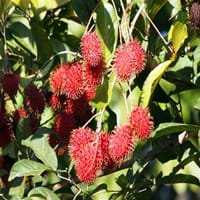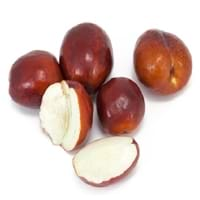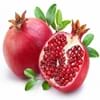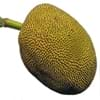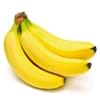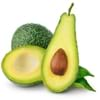Health Benefits
Anti-oxidant properties, Boosts immune system, Skin rejuvenation, Strengthening of bones
Cancer prevention, Diarrhea treatment, Improves muscular strength, Liver health, Maintains hormonal balance, Reduces nervous tension, Reduces blood circulation problems, Reduces stress, Regulation of heart rate, Treatment of hysteria
General Benefits
Antiseptic properties, Cures headache, Removes waste from kidney
Anti oxidant properties, Digestive aid, Flu treatment, Helps in weight loss, Strengthens bones, Treatment of common cold
Skin Benefits
Hydrates skin
Heals sunburn, Hydrates skin, Reduces wrinkles, Skin rejuvenation, Skin revitalization
Hair Benefits
Good conditioner
Promotes longer and healthier hair, Protects hair
Allergy Symptoms
Chest pains, Rhinitis, Wheezing
Abdominal pains, Breathing difficulty, Diarrhea, Hives, Itching in eyes, Itching of nose, Nasal congestion, Redness of eyes, Runny nose, Sneezing, Wheezing
Side Effects
Unknown
Decrease in blood sugar levels, Intense headache
Lactating Women
Yes
Not Available
Best Time to Eat
As a snack in the late afternoon, Don't consume at night and before bed, Eat the fresh ones, avoid mixing with any other foods, don't eat after meal., Morning time (before lunch)
As a snack in the late afternoon, Don't consume at night and before bed, Morning time (before lunch), Strictly avoid empty stomach
Vitamin B5 (Pantothenic Acid)
Not Available
Vitamin B9 (Folic acid)
Not Available
Vitamin C (Ascorbic Acid)
Vitamin E (Tocopherole)
Not Available
Vitamin K (Phyllochinone)
Not Available
Lutein+Zeaxanthin
Not Available
Phytosterol
Not Available
Calories in Fresh Fruit with Peel
Calories in Fresh Fruit without Peel
Not Available
Not Available
Calories in Frozen Form
Not Available
Calories in Canned Form
Not Available
Calories in Juice
Not Available
Type
Tree fruit, Tropical
Tree fruit
Season
Early summer, Early winter, Late fall, Late spring
Autumn, Summer
Varieties
Rongrien, Chompu, Rapiah, Bingjai and Lebak Bulus
Honey Jar, Sugar Cane, Li, Shanxi Li, Sherwood, Chico, Silverhill, Tigertooth, Winter Delight and Lang
Color
Coral red, Yellow
Green, Red, Yellow
Inside Color
Greyish-white
White
Soil Type
Clay, Loam
Sandy, Well-drained
Climatic Conditions
Humid
Warm to hot climate
Facts about
- Oils extracted from its seeds is used to make soaps and candles.
- 'Rambut' means hairy in Malay.
- It makes the best hair mask.
- Seeds are edible and healthy too.
- Pigment extracted from Indian jujube is used for silk dyeing in Burma.
- In Korea, jujube wood is used to make wind instrument taepyeongso.
- Fresh jujube is known as Chinese apple & dried form is called as Chinese date.
Top Producer
Thailand
China
Other Countries
Africa, India, Indonesia, Malaysia, Philippines, Sri Lanka
Bangladesh, India, Iran, Korea, Lebanon, Pakistan
Top Importer
Singapore
United States of America
Top Exporter
Thailand
China
Botanical Name
Nephelium lappaceum
Ziziphus zizyphus
Synonym
Rambota
Ziziphus jujuba or Ziziphus mauritania or Zizyphus jujuba
Subkingdom
Tracheobionta
Tracheobionta
Division
Tracheophyta
Magnoliophyta
Class
Magnoliopsida
Magnoliopsida
Family
Sapindaceae
Rhamnaceae
Species
N. lappaceum
Z. zizyphus
Generic Group
Not Available
Not Available
Compare Rambutan and Jujube
It is important compare Rambutan and Jujube as both the fruits have a different nutritional value. Their comparison can be done on the basis of their vitamin and mineral content, calories, benefits as well as characteristics, making it easier for us to choose the best fruit for our diet. Their general health benefits are as follows:
Rambutan Benefits: antiseptic properties, cures headache and removes waste from kidney.
Jujube Benefits: anti oxidant properties, digestive aid, flu treatment, helps in weight loss, strengthens bones and treatment of common cold.
Fruits are also used as a remedy for various hair problems. The hair benefits of Rambutan are: good conditioner and hair benefits of Jujube are: promotes longer and healthier hair and protects hair. Some fruits are known to cause allergic reactions. The allergy symptoms of first fruit are: chest pains, rhinitis and wheezing and the symptoms of second fruit are: abdominal pains, breathing difficulty, diarrhea, hives, itching in eyes, itching of nose, nasal congestion, redness of eyes, runny nose, sneezing and wheezing. Get sorted Rambutan vs Jujube comparison with the help of fruit comparison tool by fruitvs.com.
